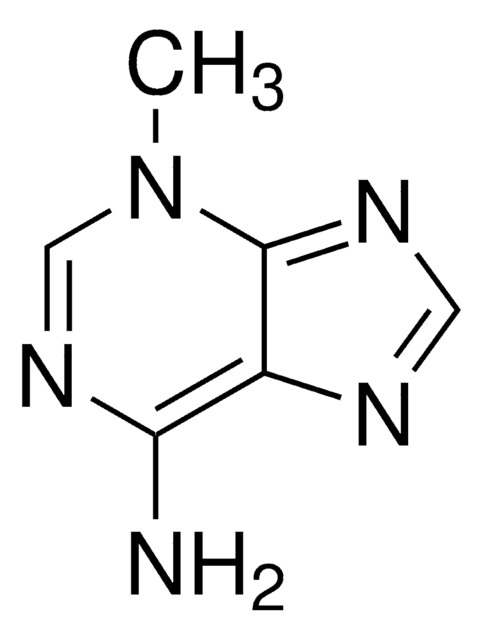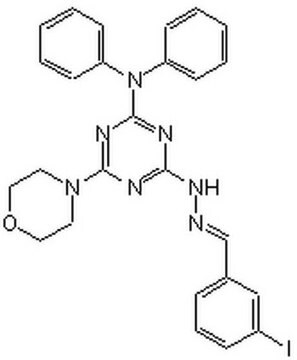SML1661
Bafilomycin A1
from Streptomyces griseus, ≥90% (HPLC), DMSO solution, V-ATPase inhibitor
Synonyme(s) :
BafA1
About This Item
Produits recommandés
product name
Bafilomycin A1 Ready Made Solution, 0.16 mM in DMSO, from Streptomyces griseus
Source biologique
Streptomyces griseus
Niveau de qualité
Forme
DMSO solution
Concentration
0.16 mM in DMSO
Conditions d'expédition
dry ice
Température de stockage
−20°C
InChI
1S/C35H58O9/c1-19(2)32-24(7)27(36)18-35(40,44-32)26(9)31(38)25(8)33-28(41-10)14-12-13-20(3)15-22(5)30(37)23(6)16-21(4)17-29(42-11)34(39)43-33/h12-14,16-17,19,22-28,30-33,36-38,40H,15,18H2,1-11H3/b14-12+,20-13+,21-16+,29-17-/t22-,23+,24-,25-,26-,27+,28-,30-,31+,32+,33+,35+/m0/s1
Clé InChI
XDHNQDDQEHDUTM-JQWOJBOSSA-N
Description générale
Application
- as an endosome acidification inhibitor to study the importance of endosome acidification in the extracellular vesicle uptake and cytosolic release of stably expressing NanoLuc luciferase-tagged Hsp70 (NLuc-Hsp70) in HeLa cells
- as a vacuolar-type H+-ATPase (V-ATPase) inhibitor to study its effects on autophagic turnover of light chain 3 β (LC3-II) in mice
- as an autophagy inhibitor to study its effects on primary rat liver sinusoidal endothelial cells (LSECs) defenestration
Actions biochimiques/physiologiques
Autres remarques
Code de la classe de stockage
10 - Combustible liquids
Classe de danger pour l'eau (WGK)
WGK 1
Point d'éclair (°F)
188.6 °F - closed cup
Point d'éclair (°C)
87 °C - closed cup
Certificats d'analyse (COA)
Recherchez un Certificats d'analyse (COA) en saisissant le numéro de lot du produit. Les numéros de lot figurent sur l'étiquette du produit après les mots "Lot" ou "Batch".
Déjà en possession de ce produit ?
Retrouvez la documentation relative aux produits que vous avez récemment achetés dans la Bibliothèque de documents.
Les clients ont également consulté
Notre équipe de scientifiques dispose d'une expérience dans tous les secteurs de la recherche, notamment en sciences de la vie, science des matériaux, synthèse chimique, chromatographie, analyse et dans de nombreux autres domaines..
Contacter notre Service technique













